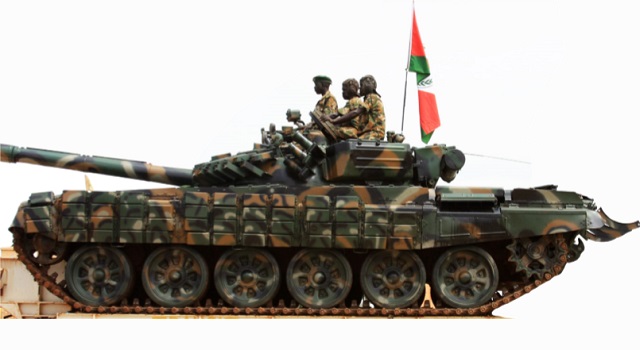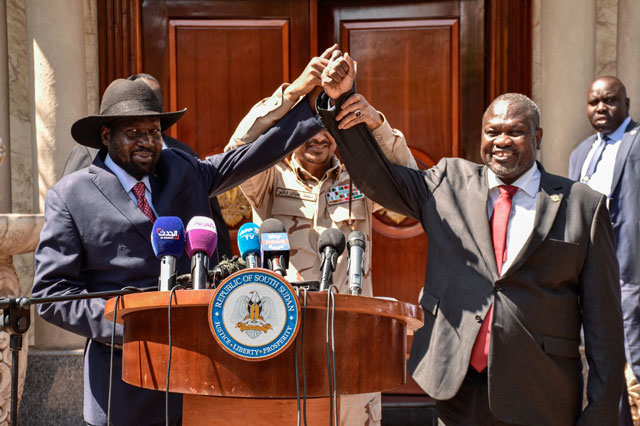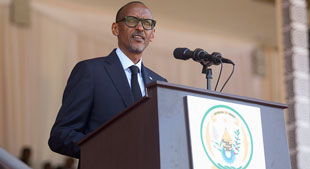
Juba, South Sudan | AFP | South Sudan is the world’s youngest country and also one of the poorest, crippled by a devastating civil war that has left tens of thousands dead.
As rebel leader Riek Machar was sworn in as vice president ahead of the formation of a new national unity government, here is some background.
– World’s youngest state –
South Sudan proclaimed its independence from Sudan in July 2011 following a referendum that saw a nearly 99 percent vote in favour of secession.
It followed two civil wars that pitted rebels in the mainly Christian and animist south of Sudan against the Arab-dominated government in Khartoum. Millions died.
A peace accord was signed in 2005 by the government and southern rebels. It exempted the south from Islamic Sharia law and granted it six years of self-rule ahead of the referendum on independence.
Salva Kiir was sworn in as the country’s first president with Riek Machar as his deputy.

– Another civil war –
Kiir and Machar were on the same side in the push for independence from Khartoum but ethnic and political rivalries drove them apart.
Tensions spiked when Machar — from the country’s second-largest ethnic group, the Nuer — was fired as vice president in 2013.
Kiir, from the majority Dinka people, later accused him of mounting a failed coup.
By December 2013 the country had descended into civil war marked by ethnic massacres, widespread rape, the recruitment of child soldiers and other forms of brutality.
Under a 2015 peace deal, Machar was reinstalled as vice president. But fighting broke out again and he and his forces fled.
The two foes met in June 2018 and a new peace agreement was agreed that September with the aim of setting up a government of national unity. It was twice postponed.
More than 380,000 people have died in the latest war, half due to illness and lack of access to healthcare.
About four million have been forced from their homes.
In a report released this week, the United Nations accused government forces and other armed groups of having “deliberately starved” civilians by denying aid access and displacing communities.
– Poverty and locusts –
Of South Sudan’s 11 million population, 82 percent live below the poverty line, according to the World Bank in 2018.
It is ranked 186 out of 189 countries in the UN’s Human Development Index.
Adding to its woes, swarms of desert locusts have plagued the country for the past weeks.
Sixty percent of the population already faces severe hunger, after the combined effects of war, drought and floods.
– Economy in ruins –
Oil production — from which South Sudan gained 98 percent of its revenues on its independence — accounts for almost all of its exports and more than 40 per cent of GNP, according to the World Bank.
Since the 2018 peace agreement, crude oil production has risen to almost half of what it was before the war.
GDP growth is estimated at 3.2 percent in 2018/19 while inflation was halved to around 60 percent.
It is one of the countries most affected by corruption, according to Transparency International, ranking 178 out of 180.
– Swamp and savannah –
South Sudan is also home to a rich variety of wildlife, including antelopes, elephants, giraffes and lions, and the largest savanna ecosystem in the East Africa region.
A vast area known as the Sudd is the largest swampy region in the world and home to hundreds of species of birds and swathes of papyrus fields and aquatic plants.
 The Independent Uganda: You get the Truth we Pay the Price
The Independent Uganda: You get the Truth we Pay the Price


